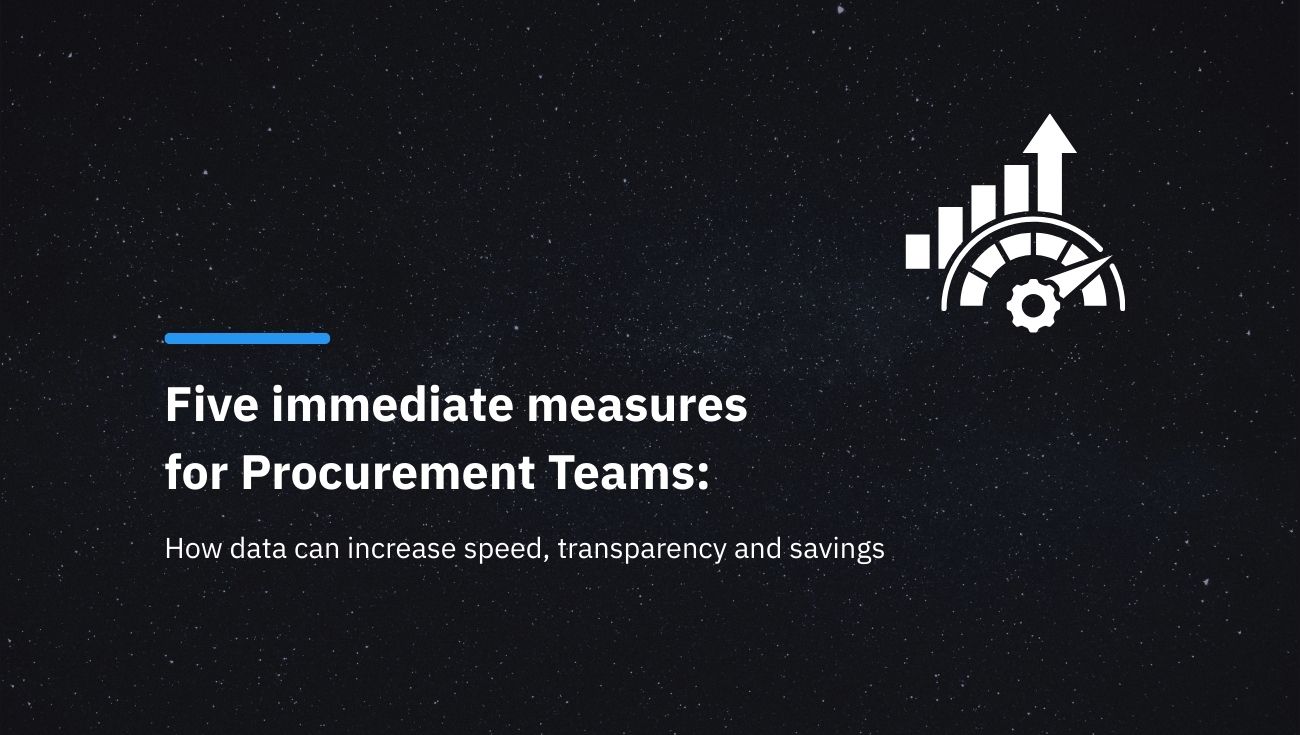Five immediate measures for purchasers: How data can increase speed, transparency, and savings

Technical buyers today face a double challenge: on the one hand, they are under increasing pressure from global crises, volatile supply chains, and fluctuating prices. On the other hand, internal expectations are rising: components need to be procured faster, more precisely, and more cost-effectively. At the same time, the variety of variants is increasing, drawing parts are becoming more complex, and new projects need to be realized ever more quickly.
However, many purchasing departments continue to work with methods and tools that date back to the pre-digital era. Drawings are sent by email, inquiries are copied into Word documents, and supplier data is maintained in Excel. The result: knowledge silos, manual search processes, and a lack of transparency. Who requested what from which supplier, what prices have already been achieved for similar parts, or how quickly does a supplier respond on average? All of this often remains unclear. Decisions are based not on data, but on gut feeling and experience.
This is particularly serious when dealing with drawing-related components. Not only is there no systematic overview of prices and delivery times, but there is also no intelligent mechanism for selecting suppliers. This results in a high level of manual effort and long response times for purchasers. The potential for cost savings remains untapped.
Acting instead of reacting in technical purchasing
Despite digital progress, many purchasing processes remain reactive. Yet this is precisely where the potential for real progress lies: those who understand their data and use it in a structured way can not only accelerate processes, but also purchase strategically. Design data is not just geometry, but also the basis for intelligent procurement.
The following five measures show how technical purchasing departments can be set up in a data-driven, efficient, and future-proof manner:
1. Digitalize inquiry processes
In many companies, digitalization ends where it could have the greatest impact: at the inquiry stage. While order confirmations and invoices are often processed automatically, inquiries are still frequently handled manually. The result: no comparability, no history, no transparency. It remains unclear who submitted which offer and when, how prices have developed, or which suppliers are regularly too expensive or too slow. Only a digital inquiry process creates the basis for strategic decisions.
2. Automate supplier selection
Especially in the case of drawing parts, each individual component must be manually inspected and assigned to a suitable supplier group for the inquiry. This costs time and resources and carries the potential for errors. Software that automatically recognizes components, bundles them, and assigns them to suitable suppliers not only relieves the team, but also creates clarity and speed. This turns a time-consuming routine into a lean, data-based process.
3. Make knowledge centrally available
In many companies, supplier knowledge is scattered like pieces of a puzzle: some of it is in an Excel list, some in the ERP system, and the rest is stored in the minds of individual colleagues. This lack of transparency becomes a risk when staff change or data is lost. A central, easy-to-use platform provides a remedy. Instead of documenting each processing procedure or machine class individually, three to four classes per category (e.g., delivery time, tolerance, material) are often sufficient to evaluate suppliers in a structured and comparable manner.
4. Make data quality a priority
Even the best software is ineffective if the database is missing. Without clean, consistent data, it is impossible to use AI, perform analyses, or make informed decisions. Those who want to work in a data-driven way in the future must lay the groundwork today. This includes a dedicated team, clear responsibilities, and a structured plan for data maintenance. Data quality thus becomes an investment in competitiveness.
5. Use data strategically
Many companies collect data, but only a few actively use it. Even simple similarity analyses of drawing parts can have a major impact: how expensive was a comparable component, which supplier manufactured it particularly efficiently, and where can components be bundled? In some cases, the inquiry process can be skipped entirely. Purchasers can order directly with a well-founded target price, generate volume effects, and thus also purchase more cheaply. This saves time, reduces costs, and makes purchasing a strategic function.
Conclusion: Competitive advantage through data
The procurement of technical components is facing a fundamental change. Those who digitalize their processes, centralize supplier knowledge, and actively use data today gain operational advantages and a strategic edge. Experience shows that even small steps can have a big impact. Which of these measures can you implement first?
In a no-obligation consultation with our experts, we will show you how technical purchasing processes can be optimized based on data and costs can be reduced in the long term.